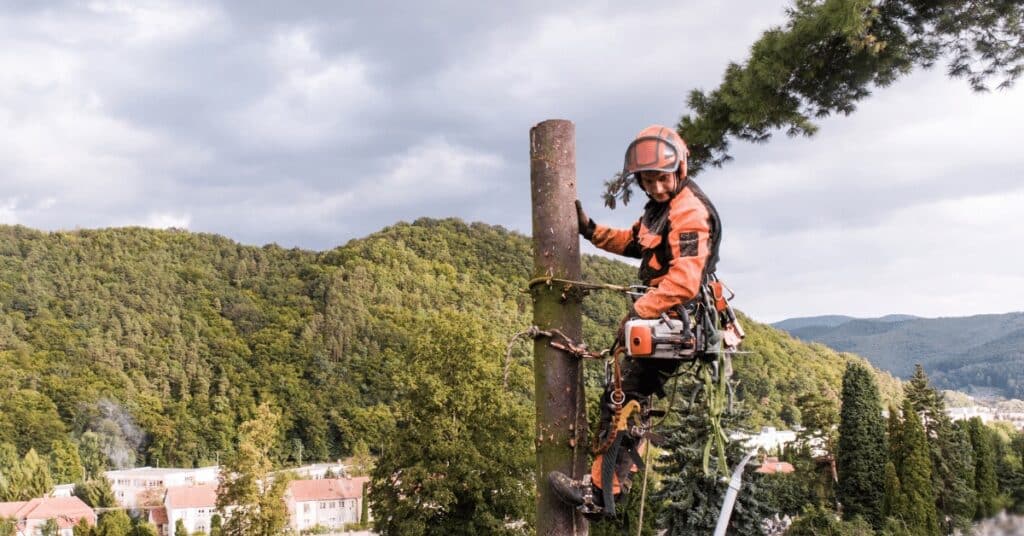By: Shelby McCullough| Published: July 1, 2024
Cutting trees in Florida requires navigating a complex web of regulations and permits designed to protect the environment and ensure public safety. This blog post explores the various permits needed, the processes involved, and tips for ensuring compliance with local laws.

Understanding the Need for Permits
Tree cutting in Florida is regulated to prevent deforestation, protect wildlife habitats, and maintain the ecological balance. Permits ensure that tree removal is done responsibly and legally. Here are some key reasons why permits are essential:
- Environmental Protection: Trees play a crucial role in absorbing carbon dioxide, providing habitats for wildlife, and preventing soil erosion.
- Public Safety: Ensuring that tree removal does not pose a danger to the public, especially in urban areas.
- Aesthetic and Property Value: Maintaining the natural beauty of the area and the value of properties.
Cutting Trees in Florida: Types of Permits Required
Different types of permits may be required depending on the location and type of tree. Below are the main types of permits needed for cutting trees in Florida:
- City or County Permits: Local governments often have specific regulations and permit requirements.
- State Permits: Certain areas, especially those near wetlands or protected lands, may require state-level permits.
- Special Permits: For protected species or heritage trees, additional permits might be necessary.

Local Government Permits
City and County Regulations
Each city or county in Florida may have its own set of rules regarding tree cutting. For example, in Orlando, a permit is required to remove trees that are over a certain diameter or height.
- Orlando Tree Removal Permit:
- Required for trees with a diameter of 4 inches or more.
- An application must be submitted detailing the reason for removal and plans for replanting or mitigating the impact.
State-Level Permits
Florida Department of Environmental Protection (FDEP)
The FDEP oversees the protection of wetlands and other environmentally sensitive areas. Cutting trees in these areas often requires a permit to ensure minimal environmental impact.
- Wetlands Protection Permit:
- Necessary for any tree cutting activities near wetlands.
- Requires an environmental impact assessment.

Special Permits for Protected Trees
Heritage Trees
Heritage trees, which are significant due to their size, age, or historical importance, require special permits for removal.
- Heritage Tree Removal Permit:
- Application must include a justification for removal and a plan for replanting.
- Often involves a public hearing or review by a tree board or environmental committee.
Steps to Obtain a Tree Cutting Permit
Obtaining a permit involves several steps, including:
- Determine Permit Type: Identify whether you need a city, county, state, or special permit.
- Submit Application: Complete the necessary forms and provide required documentation, such as a site plan or environmental impact statement.
- Inspection and Review: An inspector may visit the site to assess the tree and the impact of its removal.
- Approval: Once reviewed, the permit will be approved or denied. If approved, you can proceed with the tree removal according to the permit conditions.
Penalties for Non-Compliance
Failing to obtain the necessary permits can result in significant fines and legal action. Here are some potential penalties:
- Fines: These can range from hundreds to thousands of dollars depending on the severity of the violation.
- Restoration Orders: You may be required to replant trees or restore the area to its original condition.
- Legal Action: In severe cases, legal action may be taken against you, resulting in additional costs and potential damage to your reputation.
Tips for Compliance
To ensure you are in compliance with Florida’s tree cutting regulations, consider the following tips:
- Consult Local Authorities: Always check with your local city or county government before proceeding with tree cutting.
- Hire a Certified Arborist: They can provide expert advice and help navigate the permit process.
- Document Everything: Keep detailed records of all communications, applications, and permits.
FAQs
Frequently Asked Questions
Q: Do I need a permit to remove a dead tree?
A: It depends on your local regulations. In some areas, even dead trees require a permit for removal.
Q: How long does it take to get a tree cutting permit?
A: The time frame can vary from a few days to several weeks, depending on the complexity of the application and the specific regulations in your area.
Q: Can I appeal a permit denial?
A: Yes, most local governments provide an appeal process if your permit application is denied.
Q: What should I do if I see someone cutting trees without a permit?
A: Report it to your local city or county authorities. Unauthorized tree cutting can have serious environmental and legal repercussions.
Q: Are there any exemptions to the permit requirement?
A: Some areas may have exemptions for certain types of tree removal, such as for trees that pose an immediate danger. Always check with local regulations to confirm.
Conclusion
Cutting trees in Florida involves adhering to various regulations to protect the environment and ensure public safety. By understanding the permit requirements and following the proper procedures, you can contribute to the preservation of Florida’s natural beauty and avoid legal issues. Always consult with local authorities and hire professionals to ensure compliance and successful tree management.

